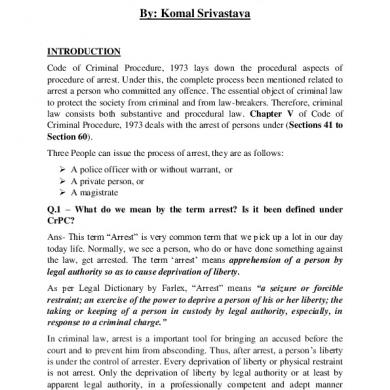The Self As Embedded In Culture
This document was uploaded by user and they confirmed that they have the permission to share it. If you are author or own the copyright of this book, please report to us by using this DMCA report form. Report DMCA
Overview
Download & View The Self As Embedded In Culture as PDF for free.
More details
- Words: 336
- Pages: 5
Loading documents preview...
THE SELF AS EMBEDDED IN CULTURE Contributed by: Trisha Mae M. Paular
CLIFFORD GEERTZ (1973) ■ An American anthropologist who offers a reformulation of the concept of culture which favors a symbolic interpretative model of culture. ■ Defines culture as a system of inherited conceptions expressed in symbolic forms by means of which people communicate, perpetuate, and develop their knowledge about and attitudes toward life. ■ He proposes that it is necessary that humans give meanings to their experiences so that order in the world can be established.
■ Geertz agrees with Max Weber, that “man is an animal suspended in webs of significance he himself has spun,” in which those webs are perceived to be symbolic of culture. ■ Geertz attempt to illustrate an accurate image of man so he suggested these two important ideas: – 1. culture should not be perceived only as “complexes of concrete behavior patterns – customs, usages, traditions, habit clusters – as has, by and large, been the case up to now, but as a set of control mechanisms – plans, recipes, rules, instructions – for the governing behavior; and
– 2. man is precisely the animal most desperately dependent upon such extragenetic, outside-the-skin control mechanisms, such cultural programs, for ordering his behavior. Therefore, man is defined by his genetic potentials shaped into actual accomplishments which is made possible by culture. Geertz also emphasizes that human nature is interdependent with culture: “Without men, no culture, certainly; but equally, and more significally, without culture, no men.”
Robbins (2012) considered human beings as cultural animals as they create the meanings of objects, persons, behaviors, emotions and events, and behave in accordance with meanings they assume to be true. Every aspect of their lives is filled with meaning, and if they share the meanings they impose on their experiences, they are operating within the same culture. Cultural differences exist when groups of people assign different meanings to different life events and things. Hence, the self is embedded in culture.
CLIFFORD GEERTZ (1973) ■ An American anthropologist who offers a reformulation of the concept of culture which favors a symbolic interpretative model of culture. ■ Defines culture as a system of inherited conceptions expressed in symbolic forms by means of which people communicate, perpetuate, and develop their knowledge about and attitudes toward life. ■ He proposes that it is necessary that humans give meanings to their experiences so that order in the world can be established.
■ Geertz agrees with Max Weber, that “man is an animal suspended in webs of significance he himself has spun,” in which those webs are perceived to be symbolic of culture. ■ Geertz attempt to illustrate an accurate image of man so he suggested these two important ideas: – 1. culture should not be perceived only as “complexes of concrete behavior patterns – customs, usages, traditions, habit clusters – as has, by and large, been the case up to now, but as a set of control mechanisms – plans, recipes, rules, instructions – for the governing behavior; and
– 2. man is precisely the animal most desperately dependent upon such extragenetic, outside-the-skin control mechanisms, such cultural programs, for ordering his behavior. Therefore, man is defined by his genetic potentials shaped into actual accomplishments which is made possible by culture. Geertz also emphasizes that human nature is interdependent with culture: “Without men, no culture, certainly; but equally, and more significally, without culture, no men.”
Robbins (2012) considered human beings as cultural animals as they create the meanings of objects, persons, behaviors, emotions and events, and behave in accordance with meanings they assume to be true. Every aspect of their lives is filled with meaning, and if they share the meanings they impose on their experiences, they are operating within the same culture. Cultural differences exist when groups of people assign different meanings to different life events and things. Hence, the self is embedded in culture.
Related Documents

The Self As Embedded In Culture
January 2021 0
Reviewer In Understanding The Self
March 2021 0
The Self
January 2021 2
6 The Self Cognitive As The Cognitive Construct.ppt
February 2021 0
Understanding The Self Printable
February 2021 2
Rut In As
January 2021 0More Documents from "jose5851628"

The Self As Embedded In Culture
January 2021 0
Global Networks - Trends, Networks And Critical Thinking
February 2021 1
Procedure Of Arrest Under Crpc
February 2021 0
Makalah Erg
February 2021 0
Economic Policy
January 2021 1